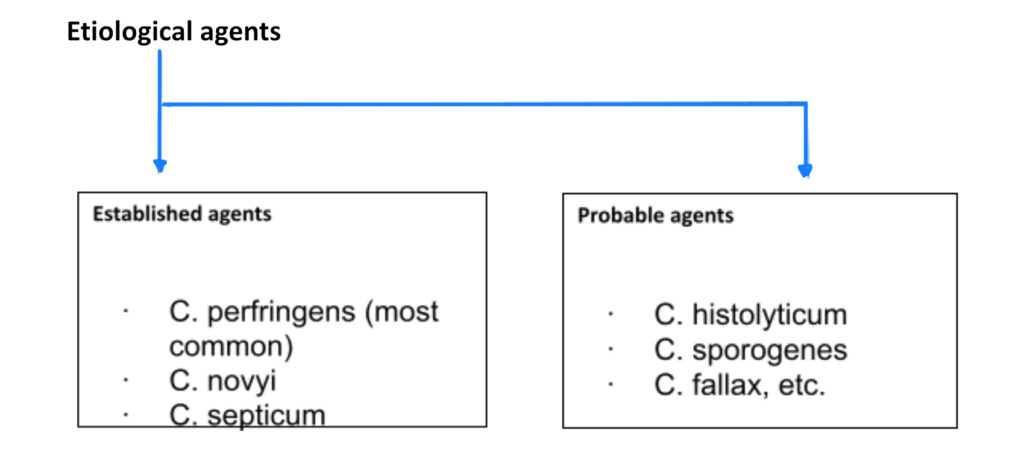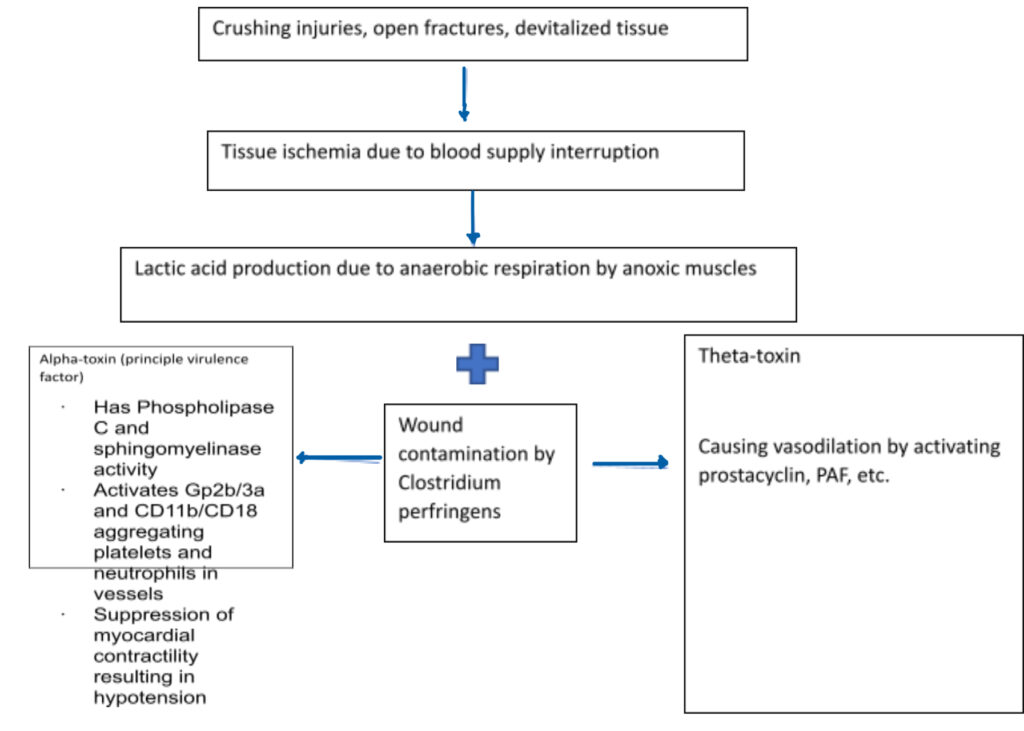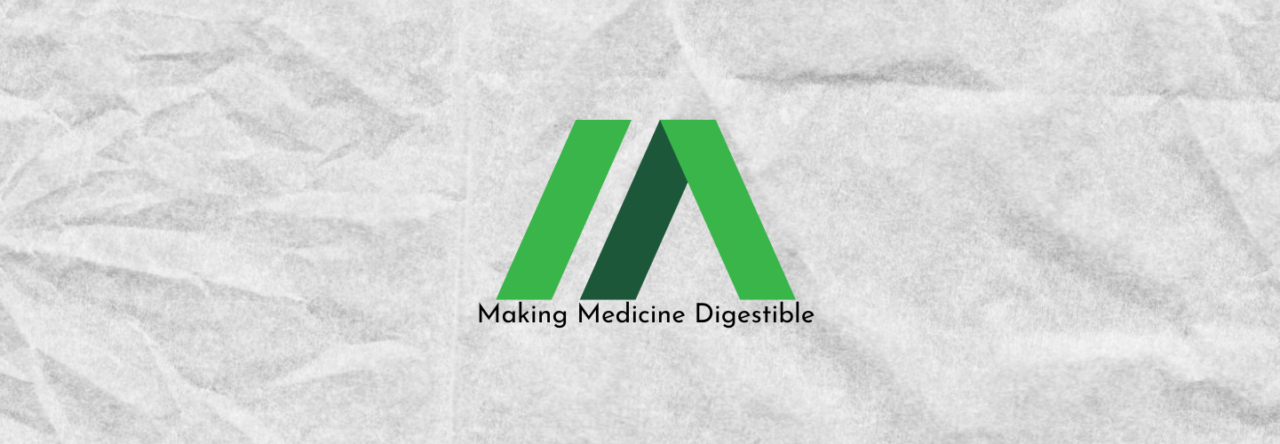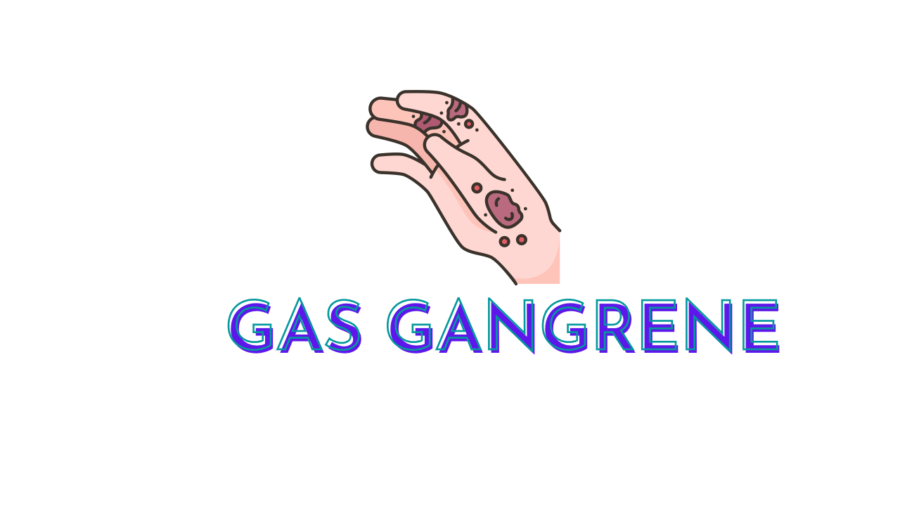DEFINITION :
Rapidly spreading, edematous myonecrosis, occurring in association with severely crushed wound contaminated with pathogenic clostridia.
OTHER NAMES :
Malignant edema / Clostridial Myonecrosis.
ETIOLOGY :
Gas gangrene is caused by clostridia species. Organisms involved can be typed in following manner :

PATHOGENESIS :
Gas Gangrene usually follows a traumatic event. The steps that unfold during the pathogenesis of the disease are as follows :

CLINICAL MANIFESTATIONS :
Incubation Periods (period between contact and clinical manifestations) :
10-14 hrs (C. perfringens)
2-3 days (C. septicum)
5-6 days (C. novyi)
Various manifestations :
- Sudden, excruciating pain
- Foul-smelling serosanguineous discharge
- Crepitus in muscle planes
- Brawny edema and induration
- Septic Shock
LABORATORY DIAGNOSIS :
It has only confirmatory and species identification roles. Treatment should be started immediately based on the clinical diagnosis.
Specimen :
Ideally from necrotic tissues, muscle fragments and exudates from deeper part of the wound
Blood culture may be positive for C. perfringens and C. septicum
Should be put into Robertson’s cooked meat broth and transferred immediately to the laboratory
Direct Microscopy :
- Absence of neutrophils in the infected tissues is characteristic.
- Thick, stubby, boxcar-shaped, gram-positive bacilli without spore- suggestive of C. perfringens are seen
- Spore bearing gram-positive bacilli suggest other species :
- Citron bodies– suggestive of C. septicum
- Oval sub-terminal spores– suggest C. novyi
Identification for C. perfringens :
A. Target hemolysis (double zone hemolysis) :
Inner zone: due to theta-toxin
Outer zone: due to alpha-toxin
B. Nagler’s reaction – Opalescence surrounding streak line om egg yolk agar due to lecithinase activity of alpha-toxin
C. Reverse CAMP test – Arrow-shaped hemolysis pointing towards C. perfringens when Streptococcus agalactiae is streaked perpendicular to it.
D. Heat intolerance – C. perfringens grow when RCM broth is incubated at 45 degree Celsius for 4-6 hrs.
E. Stormy clot reaction in litmus milk due to lactose fermentation
TREATMENT :
- Early surgical debridement (most crucial step)- Wound closure delayed until site is infection-free.
- Penicillin with Clindamycin for 10-14 days.
- Hyperbaric Oxygen against obligate anaerobes like C. perfringens but not on aerotolerant clostridia like C. septicum.
- Anti alpha-toxin antiserum (Passive immunization).
The thoughtless person playing with penicillin treatment is morally responsible for the man who succumbs to death due to penicillin resistant organism.
Alexander flaming
REFERENCE :
- Apurba S Sastry, Sandhya Bhat, Essentials of Medical Microbiology, third edition, 2021 Jaypee Brothers Medical Publishers.

